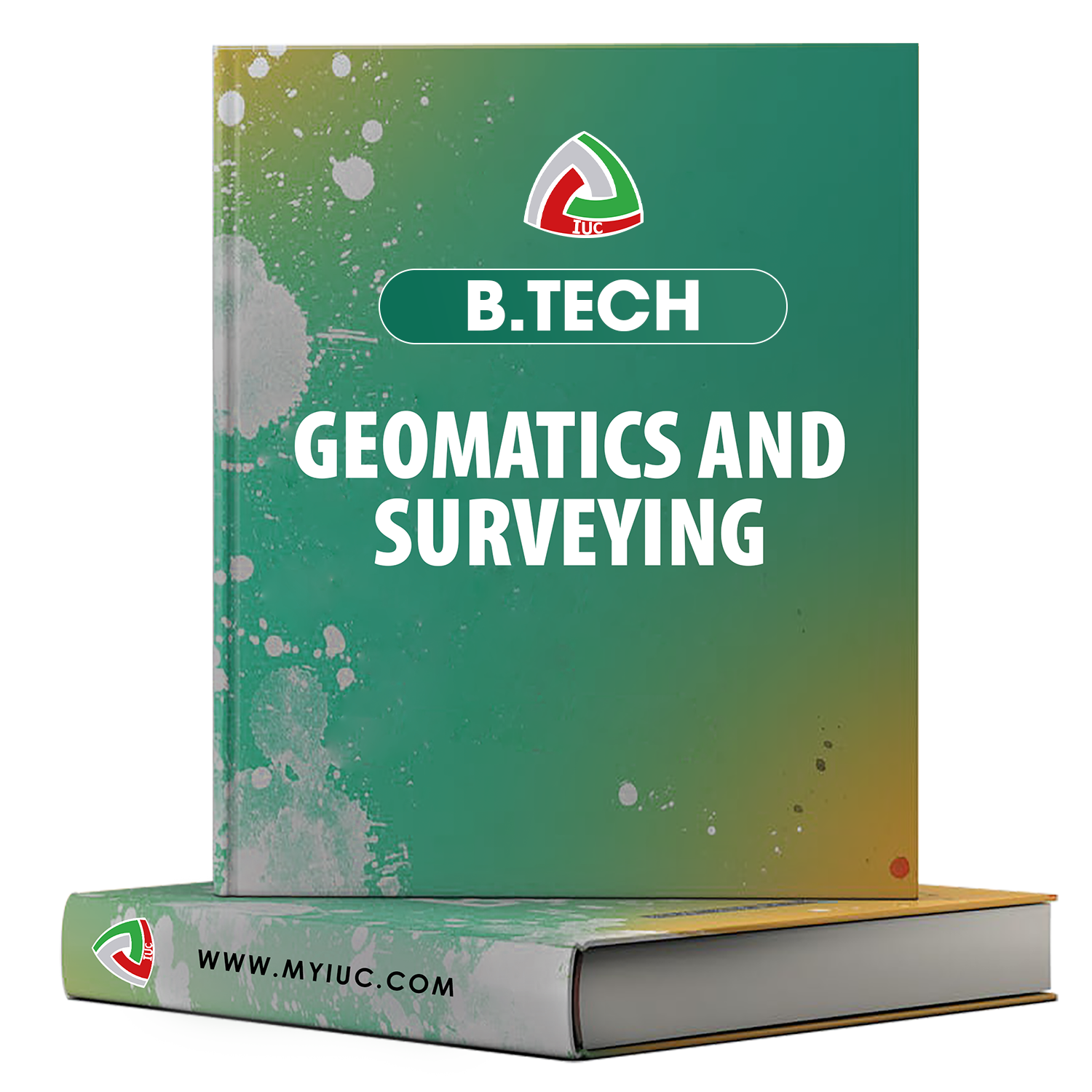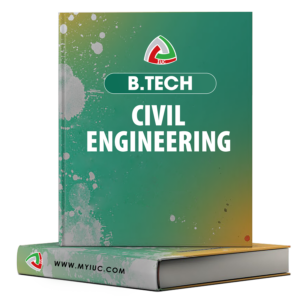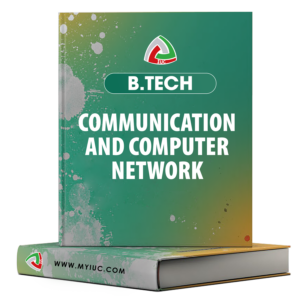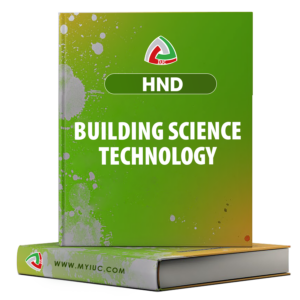The Bachelor of Technology (B.Tech) in Geomatics and Surveying program is designed to produce highly skilled professionals equipped with both theoretical knowledge and practical expertise in the fields of surveying, mapping, and geospatial technology. This program focuses on the use of advanced tools and technologies such as Geographic Information Systems (GIS), remote sensing, global positioning systems (GPS), and photogrammetry. Graduates will be well-prepared to manage and analyze spatial data, contribute to infrastructure development, and assist in urban planning, land management, and environmental conservation.
| PROGRAMME |
SEMESTER |
DURATION |
CREDIT |
PARTNER INSTITUTION |
ACCREDITATION |
| GEOMATICS AND SURVEYING |
6 SEMESTERS |
3 YEARS |
360 |
UNIVERSITY OF BUEA |
MINESUP |
CORE OBJECTIVES
1. Develop a Strong Understanding of Geomatics and Surveying Fundamentals
- – Surveying Principles : Teach students the fundamentals of land surveying, including the use of measurement instruments, methods for determining distances, angles, and elevations, and the creation of topographical maps.
- – Geodesy : Equip students with knowledge of the Earth’s physical characteristics and the science of accurately determining positions on its surface.
- – Global Positioning Systems (GPS) : Provide students with an understanding of GPS technology, its applications, and how to use it for surveying, mapping, and geospatial data collection.
2. Enhance Knowledge of Geospatial Technologies and Data Analysis
- – Geographic Information Systems (GIS) : Teach students how to collect, store, analyze, and visualize spatial data using GIS software, allowing them to make informed decisions based on geographic patterns.
- – Remote Sensing : Introduce students to the technologies and techniques of remote sensing, including satellite and aerial imagery, and how to use this data for environmental monitoring and land use planning.
- – Photogrammetry : Provide students with the knowledge to use photogrammetric techniques to create accurate maps and 3D models from aerial and satellite imagery.
3. Promote Sustainable Land and Resource Management Practices
- – Land Use Planning : Equip students with the skills needed for effective land use planning, zoning, and property management, ensuring sustainable development.
- – Environmental Monitoring : Teach students how to use geospatial tools to monitor environmental changes, such as deforestation, pollution, and land degradation, and contribute to conservation efforts.
- – Urban Planning and Infrastructure Development : Introduce students to the role of surveying and geomatics in the planning and design of urban infrastructure projects such as roads, bridges, and utilities.
4. Develop Expertise in Advanced Surveying Techniques
- – 3D Laser Scanning and LiDAR : Teach students the use of advanced technologies such as 3D laser scanning and Light Detection and Ranging (LiDAR) for highly accurate and efficient data capture in complex environments.
- – Topographic and Cadastral Surveys : Provide students with hands-on experience in conducting topographic and cadastral surveys, focusing on land boundaries and property delineation.
- – Construction Surveying : Equip students with the skills to conduct surveys for construction projects, including setting out building positions, calculating earthworks volumes, and ensuring accurate alignment.
5. Prepare Students for Geomatics and Surveying Software and Tools
- – Surveying Instruments : Train students in the use of traditional and modern surveying instruments, including total stations, theodolites, and GPS receivers.
- – Data Processing Software : Teach students how to process and analyze surveying and geospatial data using specialized software tools like AutoCAD, ArcGIS, and other surveying and mapping tools.
- – Modeling and Simulation : Provide students with the ability to create 3D models and simulations of land surfaces and construction projects using CAD (Computer-Aided Design) and other modeling software.
6. Foster Innovation in Geospatial Solutions and Technologies
- – Emerging Technologies : Encourage students to explore emerging technologies such as unmanned aerial vehicles (UAVs) for aerial surveys, drone mapping, and real-time data collection.
- – Geospatial Data Integration : Equip students with knowledge on how to integrate data from different sources, such as remote sensing, GIS, and field surveys, to create comprehensive and accurate geospatial models.
- – Smart Cities and IoT : Introduce students to the role of geomatics in the development of smart cities, with an emphasis on how geospatial technologies and the Internet of Things (IoT) can optimize urban management and infrastructure.
7. Strengthen Communication, Leadership, and Teamwork Skills
- – Effective Communication : Equip students with the skills to communicate complex geospatial data and technical concepts clearly to both technical and non-technical stakeholders through reports, presentations, and project proposals.
- – Leadership and Project Management : Develop leadership and project management skills necessary for managing surveying projects, including scheduling, budgeting, and resource management.
- – Collaboration and Networking : Promote collaboration with industry professionals, government agencies, and researchers, as well as participation in geospatial networks to build professional relationships and enhance career opportunities.
8. Foster an Understanding of Ethics and Sustainability in Geomatics
- – Ethical Considerations in Surveying : Teach students about the ethical responsibilities in surveying, such as accuracy in measurements, respect for privacy, and fair practices in land ownership and boundary disputes.
- – Sustainable Development : Encourage students to consider sustainability in their work by using geomatics to support responsible land development, natural resource management, and environmental protection.
9. Prepare Students for Career Readiness and Professional Development
- – Internships and Practical Experience : Provide students with hands-on experience through internships, field studies, and partnerships with surveying firms, government agencies, and environmental organizations.
- – Professional Certifications : Guide students in preparing for relevant certifications in surveying, such as becoming a licensed surveyor, and obtaining certifications in GIS or remote sensing to enhance their career prospects.
- – Career Services and Networking : Offer career counseling, resume-building support, and networking opportunities with professionals in the geomatics field to help students transition from education to employment.
10. Encourage Lifelong Learning and Continuous Improvement
- – Commitment to Lifelong Learning : Instill a mindset of continuous professional development, encouraging students to stay current with new technologies, surveying techniques, and industry trends.
- – Innovation and Adaptability : Prepare students to innovate and adapt to the rapidly changing geomatics and surveying landscape, fostering the adoption of new technologies and methodologies that enhance the efficiency and accuracy of surveys and geospatial data analysis.
CAREER OPPORTUNITIES
1. Land Surveyor
- Perform boundary surveys, topographic surveys, and construction staking to determine property lines and assist with land development projects.
2. Geospatial Analyst
- Analyze and interpret geospatial data using GIS software to inform decisions related to urban planning, environmental management, and resource allocation.
3. Cartographer
- Create and design maps using surveying data, remote sensing, and GIS technology, ensuring accuracy in representing geographic information.
4. GIS Specialist
- Manage, analyze, and visualize geographic data to provide spatial insights for projects in urban planning, environmental conservation, and infrastructure development.
5. Remote Sensing Specialist
- Use satellite and aerial imagery to gather data for applications such as land use mapping, environmental monitoring, and disaster response.
6. Construction Surveyor
- Work on large-scale construction projects, providing precise measurements and data for site layout, grading, and infrastructure installation.
7. Urban Planner
- Utilize surveying and geospatial data to support the planning and design of cities, towns, and urban infrastructure, ensuring sustainable development.
8. Environmental Consultant
- Use geomatics tools to assess and monitor environmental impacts, assist in natural resource management, and contribute to environmental protection efforts.
9. Surveying Equipment Specialist
- Specialize in the sales, maintenance, and repair of surveying instruments, such as total stations, GPS devices, and drones used in geospatial data collection.
10. Geospatial Software Developer
- Develop and improve software applications used for geospatial data analysis, including GIS, remote sensing, and surveying platforms.








